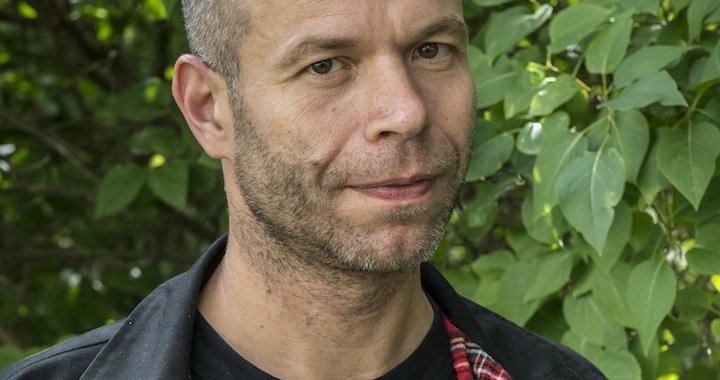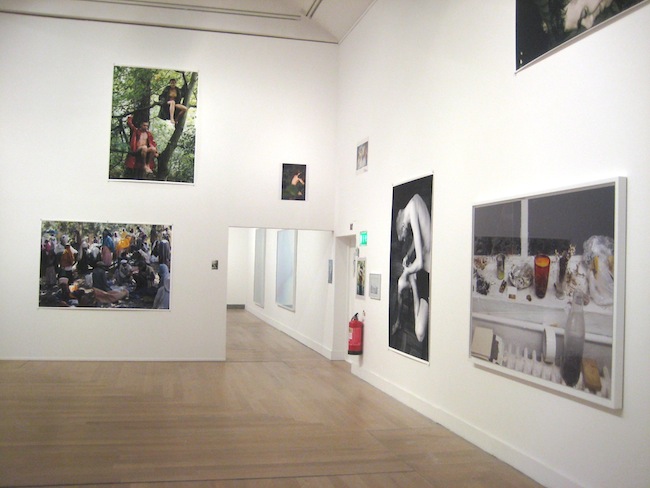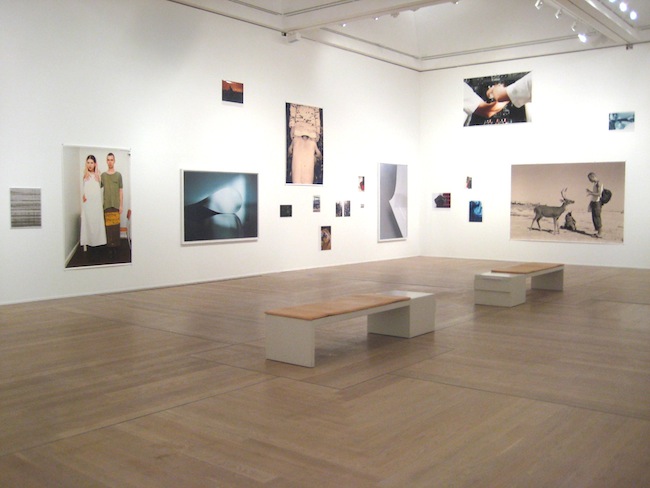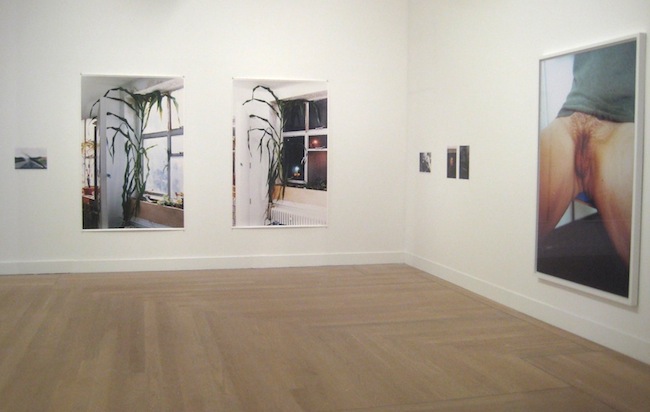
I’ve Never Taken for Granted the Ability to See
10/10/2012
The German photographer Wolfgang Tillmans (1968), who calls both Berlin and London home, hasn’t, as it might seem, been taking pictures since childhood. Photography was a favorite pastime in his family, which is why the young Tillmans looked upon it as an especially nerdy thing to do; his father’s slide-show evenings were mandatory. Tillmans got his first camera only in 1988, when he was twenty years old. At first, he made a game out of enlarging things with his Canon copier, making things – like newspaper clippings and pictures that he had taken himself – four times larger. That is, until he figured out that original photographs can be even better than manipulated ones. Today, the 44 year-old photographer needs no introduction. Tillmans first reached the zenith of fame in the 1990’s, but then secured his place in the art history books by receiving the Turner Prize in 2000 – he was the first recipient who had not been born in the UK, as well as the first photographer to have received this prestigious visual art award.
Wolfgang Tillmans’ solo show at Stockholm’s Moderna Museet, going on October 6 through January 20 of next year, is also historic – it is the artist’s largest show ever, in addition to being his first exhibition in Sweden. Walking through the many rooms in which newer and older works are organically and seamlessly integrated, one arrives in the center of the exhibition – a small, dark room with good club-music playing – and which is hard to resist; it brings to mind the British art critic Matthew Collings’ commentary on the short-list for the 2000 Turner Prize: “[I have] no idea why Tillmans is supposed to be an artist. If he wins, the message will be that the Tate . . . wants to get down and boogie in an embarrassing way with youthful airheads..."
The curator of the show, Daniel Birnbaum, is not only the director of Stockholm’s Moderna Museet, but also a supporter of Tillmans since the early 90’s. It was Birnbaum who once said that Tillmans cannot be simply grouped together with the photographers of the Dusseldorf School (a shining example being Andreas Gursky), because Tillmans makes much more use of his intuition than of just his education. In addition, the young photographer, with his Dusseldorf diploma in hand, arrived in London at just the right time – when the Young British Artists (YBA) came upon the scene, and which is why, according to Birnbaum, the biggest influence in Tillmans’ work is the zeitgeist of the 1990’s. This is a good place to mention that after closing in Stockholm, the extensive solo show will be heading to Dusseldorf.
An exhibition is always a special way to view the works of Tillmans, and not only because the photographer, with the help of a few assistants, still arranges all of the pictures himself – having spent two straight weeks working on the Stockholm exhibition alone. Another reason is because it’s an opportunity to enter a conjured, three-dimensional world, which is utterly unlike paging through one page after another in a book or catalog. “An exhibition is another affirmation of how I see the world. It’s a spacial opportunity to eradicate the linear mode of perception. In an exhibition, just as in life, all of the diversity of reality exists alongside it,” Tillmans explains. The exhibition consists of photographs in a variety of sizes, glued to the wall in differing intervals and heights: on walls and emergency exit doors; in the corner, in the middle, or up by the ceiling. There is also a lack of adherence to the principle of a thematic series – it’s more of a mix of themes. But, as the artist himself says, “this is not about randomness, but rather an acceptance of the fact that diversity prevails everywhere”. In raising our eyes, we see a starry sky; looking downward – toes; on the right there’s another person, but on the left – a fern.
“I like to immortalize the most common of things, because it is precisely these that most powerfully beg the question that, perhaps, that which seems known, really isn’t,” reveals Tillmans in a conversation with Arterritory.com. He is interested in the zone of gradation in which the beautiful becomes ugly, the worthless becomes valuable, and when the misunderstood starts to become acceptable and the hidden is revealed. “People tend to use binary relationships, but I’m interested in how, when and why one becomes the other.” The sizes of the photographs in the exhibition were also not randomly chosen, but rather to make a mockery of preconceptions; perhaps the largest photo in the show is the least important one? Taking into account that the immortalizing of daily events can be seen in Tillmans’ work at the start of his career – and all to way up to the present day – the question of how his artistic view has changed over the years seems a relevant one. “I develop through evolution rather than revolution,” replies Tillmans. “Moreover, the world is infinitely deep; it’s impossible to run out of ideas to reflect it.”
A few years after Tillmans won the Turner Prize, the above-mentioned Matthew Collings wrote that Tillmans is “the man ... who takes pictures of anything.” Similar thoughts really could arise, but Tillmans shoos them away like a cloud of dust: “Any little scrap has the possibility of becoming a work of art. A picture in the newspaper can be just as powerful as a photograph in an art museum. Then again, I’m not saying that everything is art. At issues is potential and intention.” Tillmans embodied this conviction already in the 90’s, which is when he provided stylish pictures for underground magazines, as well as had shows going on in art galleries – and he put both activities on the same scale, in terms of significance.
Since Tillmans stepped out onto the world stage more than 20 years ago, it seems as if all of the most probing questions have been answered. For instance, it is no secret that a large part of Tillmans’ photographs are staged, even though they sometimes seem like captured snapshots. When asked about this in more detail, the artist himself circumvents the issue, saying that it is hard to draw a line between a random moment and a staged scene. “When I see something great, I sometimes ask the person to freeze until I can grab my camera and take the shot. It’s like rewinding reality one second back,” explains Tillmans. “When I enter my studio after a crazy party that I threw myself, and the rays of a bright-red sunrise shine in – is the resulting shot staged, or is it completely incidental? In my opinion, there’s no point to even such a question. It is more important to be able to see the beauty that life offers, and to be able to capture it in a photograph as professionally as you can.”

Nevertheless, changes have come about in the style of Tillmans’ work. Even just the amassing of a considerable archive of work has definitely changed things. For a long time now, the artist has maintained that his photographs are never about the passing of time. But does that still hold true? “I must admit that, looking back on what has been done over almost 25 years, I now realize how suitable photography is for immortalizing time... But in no way does that give my works some sort of melancholic flavor. However, it is very hard to not become an archivist at the moment. Which is why one of my conditions in making new exhibitions is to retain a lightness by mixing together new works with the old. Therefore, none of the shows can ever be called a retrospective. What has changed over time is my ability to look at my earlier photographs with a gentle and welcoming eye.”
In digging deeper into the basic concepts that make Tillmans do his work the way he does, it should be noted that a great part has been played by the artist’s passion for astronomy – something that has captivated him since he was ten years old. “At the time, it was almost at the point where it was arousing concern,” laughs Tillmans as he tells of how he spent days-on-end studying sun spots and at night – the stars. “I am fascinated by how astronomy consists of both meticulous measurements and great abstraction. When you see a black spot on a planet, you don’t know if there really is something there, or if it’s just a speck of dust in your eye.” This old hobby of his has also been exemplified in the new exhibition – with both old newspaper articles and the Universe in photographic form. Possibly, this could also be the source of Tillmans’ philosophical conviction that everything is connected. When looking at things from an atomic point of view, it becomes conceivable that there really isn’t all that much of a difference between everything that exists. “That’s why we can say that life does not exist on Earth, but that life is Earth. Everything that exists, even the most banal things, are a manifestation of the structure of the Universe. Life is astronomical,” says Tillmans, sitting in a couch in a hallway of Moderna Museet, with a little bee embroidered on the collar of his denim shirt. His early enthrallment with the structure of the cosmos, together with the pleasure received from taking in the world through his eyes, seems to have paved the way for that special atmosphere in Tillmans’ works, which would be near impossible to forge. “I have never taken for granted the ability to see. I’m happy that every day, I can take joy in just looking at things. It’s not that way for everyone. Moreover, I can feel joy over the same thing again and again. You see, that’s something I’d never want to lose. Because a “fresh look” is not controllable. It’s only possible if you’re completely free.”


